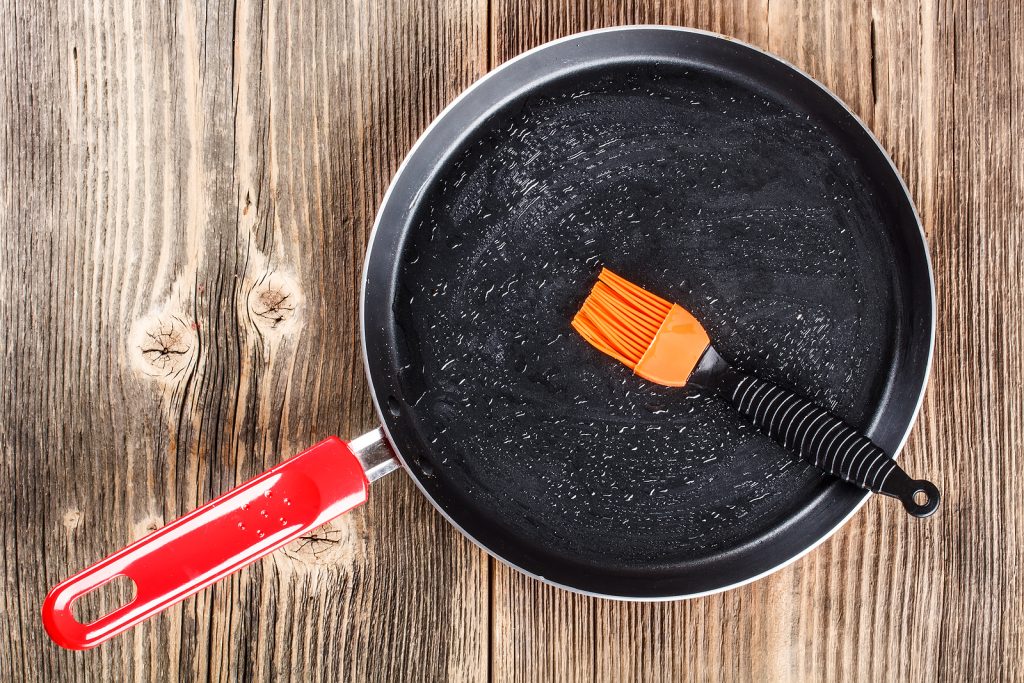It’s important that you choose the right cooking oil to get the job done. Not only is it a good thing for the flavour of the dish, but it’s also to prevent the production of smoke and free radicals. But what are smoke points, what are the smoke points of different cooking oils and why do they matter? Those are questions that we’re going to be answering in this article.
What is a cooking oil’s smoke point?
The smoke point of cooking oil is rather self-explanatory. It refers to the temperature the oil can be heated before it begins to smoke and burn. It’s a range of temperatures that it can withstand before soiling and ruining the food that you’re cooking.
No matter the type of cooking oil or what it’s made from, it will have a smoke point that needs to be taken into notice and adhered to. But why is it important for you to know the smoke point of the cooking oil you’re using? Let’s find out.
Why are smoke points important?
It’s important that you’re aware of the different smoke points that cooking oils have, and for good reason. When an oil starts to smoke, it oxidises. This will then cause it to taste burnt and bitter, ruining the dish you’re cooking. In addition to producing unpleasant tastes and odours, it can also release harmful compounds that are referred to as free radicals.
They’ve been linked to cellular damage that can cause health issues to humans when ingested. It can also destroy any beneficial nutrients that the cooking oil has. Essentially, letting the cooking oil burn has no benefit to the cooking oil itself whatsoever, rendering it useless. This is why you need to be aware of the smoke point of the cooking oils you’re using.
Cooking oils & their smoke points
There are many cooking oils on the market, and it can be difficult to choose the right one for you and the method of cooking you’re using. However, it’s important that you choose a cooking oil with the right smoke point to ensure optimum cooking and results.
It also helps to minimise smoke in the kitchen and prevent the oil from breaking down and becoming rancid in the process. Here are the different cooking oils available from us here at Cater Oils, together with the smoke points and applications of each one:
Extra virgin olive oil & peanut oil – 190-207 degrees Celsius
The smoke point of extra virgin olive oil will vary depending on whether it’s refined or unrefined. Its quality and acidity will also play a part in the smoke point temperature. Extra virgin olive oil can be extremely versatile when it comes to cooking and baking.
Extra virgin olive oil, however, can be expensive, which is why it’s often reserved for use as salad dressings, dips and marinades. However, it can be used in a wide range of cooking methods, if required, such as:
- Salads
- Dips
- Roasting
- Baking
- Grilling
- Frying
- Sauteing
Olive oil – 190-243 degrees Celsius
A refined olive oil, unlike its counterpart (extra virgin olive oil), has a lower acidity but a higher smoke point, often coming in at around 240 degrees Celsius. Olive oil can be used for a wide range of cooking methods and applications, including baking, roasting, frying, sauteing, dressings and marinades.
Vegetable oil – 200 degrees Celsius
This smoke point is ideal for a wide range of cooking methods. It can be used for low heat and high heat cooking as and when required. The exact smoke point can vary depending on the blend of oils used in the vegetable oil itself. Despite this, vegetable oil can be used for various cooking applications, such as:
- Frying
- Sauteing
- Baking
- Roasting
- Dressings
- Marinades
Sunflower oil – 225-232 degrees Celsius
The smoke point of sunflower oil will vary depending on whether it’s refined or unrefined. Refined sunflower oil has a smoke point of around 232 degrees Celsius, whereas unrefined sunflower oil has a smoke point of approximately 225 degrees Celsius.
This is because refined and unrefined sunflower oil has different properties. For instance, refined sunflower oil is processed in order to remove impurities, resulting in a mild flavour and a higher smoke point. This makes it perfect for stir-frying and deep-frying.
Unrefined sunflower oil, on the other hand, retains its natural components and has a more pronounced flavour when compared to its refined counterpart. It’s suited for low-temperature cooking and can also be used as a finishing oil.
Rapeseed oil – 230 degrees Celsius
Rapeseed oil has a higher smoke point when compared to other cooking oils. This means that it’ll be able to withstand far higher temperatures when compared to its counterparts. It can therefore be used for cooking methods such as frying and sauteing without breaking down and producing smoke in the process. Rapeseed oil can be used for the following cooking applications:
- Frying
- Roasting
- Baking
- Stir-frying
Cater Oils offers a reliable supply of fresh cooking oils, including vegetable, sunflower, olive, pomace and rapeseed oil. Alongside our oil deliveries, we provide a free waste cooking oil collection service. We’ll pick up your used oil directly from your premises at no cost. In exchange, you can choose between receiving cash or a credit note to use toward your next fresh oil order. Your recycled oil is then processed into biodiesel, helping to fuel the local community sustainably. For more details, feel free to contact our friendly and professional team – we’re always happy to help.






